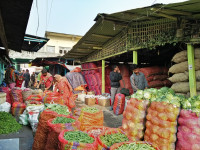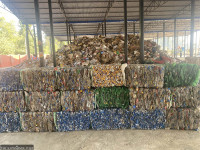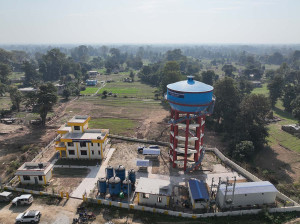Money
Foreign currency reserves fall 6.64 percent to $9.41 billion
Nepal’s foreign currency reserves dropped 6.64 percent to $9.41 billion in the mid- July to mid-January period as import expenses surged despite a notable rise in the earnings from remittance.
Nepal’s foreign currency reserves dropped 6.64 percent to $9.41 billion in the mid- July to mid-January period as import expenses surged despite a notable rise in the earnings from remittance.
According to the Nepal Rastra Bank’s current macroeconomic report of six months, the country’s current foreign currency reserves can finance merchandise imports for 8.9 months while the amount is sufficient to finance import of both goods and services for 7.8 months.
The fall in foreign currency reserves is in line with the country’s soaring deficit in Balance of Payment (BoP), the key macroeconomic indicator that reveals the country’s position in total outflow and inflow of funds. As per the central bank’s report, the country’s BoP deficit stood at Rs63.68 billion as of mid-January. The BoP deficit in the same period last year was Rs6.66 billion.
With mounting pressure on the country’s foreign currency reserves, NRB has enforced a number of measures to check the outflow of foreign currencies over the period. The central bank has reduced the ceiling of foreign currencies that outbound workers can carry to $200 – down from $500. Passport holders can now only carry $1,500 while leaving the country, down from $2,500 in the past.
Likewise, the government has planned to check the import of luxury items among others. The BoP deficit over the period was largely affected by the country’s worsening current account position which reached a deficit of Rs152.16 billion, with the net outflow of Rs32.83 billion in just the mid-December to mid-January period. Merchandise trade and remittance are the major components that determine Nepal’s current account position.
During the period, the country received Rs443.36 in remittance, a growth of 30.2 percent. However, the soaring trade deficit has offset the growth. Remittances have been one of the major sources of foreign currency earnings for the country. The country’s trade deficit has widened by 32.1 percent to Rs678.53 billion.
In the first half of the current fiscal year, the country’s import bill surged by 30.5 percent to Rs723.94 billion. Expenses on import of petroleum products, aircraft spare parts, MS billet, readymade garments and machineries rose during the period.
On the other hand, the country’s export earnings increased by a mere 10.3 percent to Rs45.41 billion. Export earnings from cardamom, rosin, tanned skin, shoes and sandals and herbal medicines all increased.
Among other components of the BoP, payment on services also surpassed the receipt amount by Rs9.45 billion, a sharp increase from the Rs1.42 billion during the same period last year. Under the heading, earning from tourist inflow increased 8.1 percent to Rs36.50 billion while outbound travelers spent Rs47.99 billion abroad, a rise by 30.8 percent. Over the period, Nepali people spent Rs25.59 billion to study abroad. Likewise, capital transfer also declined to Rs6.89 billion from Rs10.07 billion while capital inflow via foreign direct investment slowed to Rs4.36 billion from Rs14.33 billion.
Analysts said the deteriorating foreign currency reserves could give rise to serious economic problems in the future, especially to import based countries like Nepal, if it is not addressed on time. “The government should enforce effective measures for import substitutions on time to minimise the growing pressure on foreign currency reserves,” said Ram Prasad Gyanwali, economist and former head at the Central Department of Economics, Tribhuvan University.




 15.12°C Kathmandu
15.12°C Kathmandu














